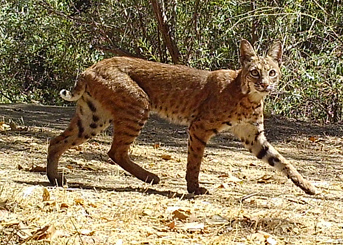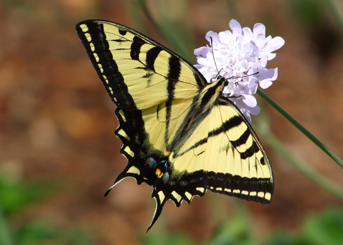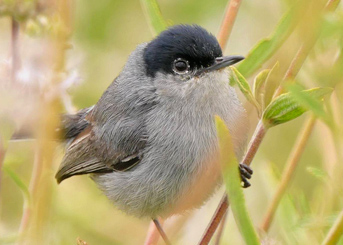A common visitor to people living near natural areas (but also to urban areas away from natural areas) is the coyote. When residents living in communities surrounding natural areas (such as the Puente Hills) get coyotes in their neighborhoods, their first thought typically is that the coyotes are “coming down from the hills”. Although many coyotes do enter residential areas from natural areas looking for food, the vast majority of coyotes found in residential areas are year-round residents, including very urban neighborhoods with essentially no natural areas.
Understandably, people are curious and sometimes frustrated with these wild neighbors. Coyotes play an important role in the ecosystem, helping to keep populations of rodents and other small mammals under control. Coyotes are by nature fearful of humans, however they readily lose their fear of humans when people intentionally or unintentionally provide food/water or shelter for them, or otherwise do not try to deter them from visiting. Eliminating sources that attract coyotes can go a long way in addressing the situation. Eliminating coyotes by lethal means only perpetuates the population as they will reproduce to “make-up” for the lost individual, oftentimes resulting in more coyotes than before.
- The periods during the year when coyotes are most active and visible, potentially causing more interactions with people and pets, are during mating season (January– March) and during pup-rearing season (May – July).
- If you encounter a coyote, make noise and make yourself seem even bigger. An average adult coyote is about 35 pounds and will be intimidated by people. While they may stop and observe, they will eventually run.
- Do not run away or turn your back on them. A coyote is hardwired to chase. Stand your ground and then back slowly away while making loud noises.
- Coyotes cannot distinguish between a small pet and their prey. When you’re walking your dog, keep them on a short leash. Cats should not be left outdoors alone.
- If you feel your personal safety is immediately at risk, call 911.
Proactive things to do around your home to discourage visits by coyotes:
- Fence your backyard. Fences that are 6 feet high and 6 inches underground are an effective means of keeping wildlife out, especially coyotes. More information about a specialized coyote proof fence can be found at http://www.coyoteroller.com/
- Secure garbage cans.
- Do not intentionally provide food or water for wildlife.
- If you have fruit trees, pick ripe fruit from the tree on a regular basis, and pick up fallen fruit from the ground.
- Do not leave dog or cat food outside.
- Keep pets indoors, especially at night.
- Keep chickens, turkeys and goats in covered pens.
- Clear away bushes and dense weeds near your home where coyotes find cover and smaller prey to feed on.
- Eliminate water sources that may attract wildlife.
- Ask your neighbors to do the same.
For more information visit Living With Wildlife
or CA Department of Fish and Wildlife http://www.dfg.ca.gov/keepmewild/





